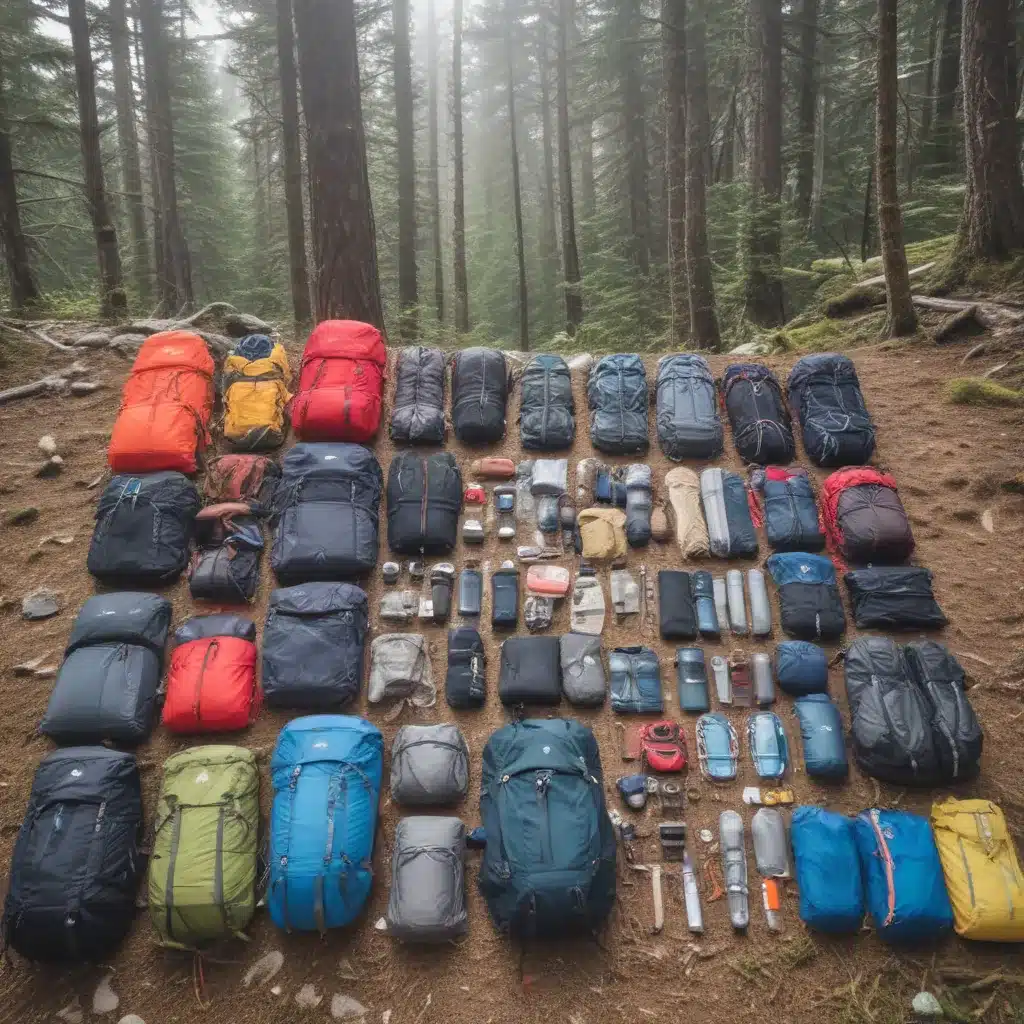
The Essentials of Ultralight Hiking
When it comes to multi-day hikes and backpacking adventures, there’s nothing quite as liberating as traveling light. I’ve learned this firsthand through years of exploring the great outdoors, from trekking the Camino de Santiago in Spain to conquering the Milford Track in New Zealand. Packing smart is the key to keeping your load manageable and your spirits high, no matter the terrain or the weather conditions you encounter.
As the 5 Kilo Traveller suggests, the first rule of ultralight hiking is safety. You must be prepared for the worst-case scenario, but that doesn’t mean you have to carry your entire home on your back. It’s all about striking the right balance between essential gear and sensible minimalism.
One of the biggest challenges I’ve faced is determining what to pack and what to leave behind. It’s so tempting to throw in that extra outfit “just in case,” or to toss in a few “must-have” toiletries that end up taking up precious space. But I’ve learned that every gram counts when you’re the one hauling your pack up steep inclines and through rugged terrain. The r/Ultralight community has been an invaluable resource, sharing their strategies for packing light without sacrificing essential items.
The Power of Layers
When it comes to clothing, versatility is key. I’ve found that the best approach is to build a wardrobe of high-quality, multi-functional pieces that can be easily layered to adapt to changing conditions. As the blogger at In a Far Away Land explains, merino wool is a game-changer. This natural, odor-resistant fabric keeps you warm when it’s cold and cool when it’s hot, all while wicking away moisture to prevent that dreaded “wet chill” feeling.
I never leave home without at least three merino base layers: one for hiking, one for sleeping, and one as a backup. And the versatility doesn’t stop there. I’ve got merino underwear, socks, trousers, a skirt, a sweater, a hat, gloves, and even a neck buff. While the initial investment may be a bit higher, these pieces are built to last, and the comfort and protection they provide are well worth it.
Of course, layering isn’t just about the base. I also make sure to pack a high-quality, synthetic puffer jacket and a waterproof rain shell to shield me from the elements. These outer layers may add a bit of weight, but they’re essential for keeping me warm and dry, no matter what Mother Nature throws my way.
Footwear: The Foundation of Comfort
When it comes to hiking, your feet are your foundation, and the right footwear can make all the difference between a joyful adventure and a painful slog. I’ve learned this lesson the hard way, having pushed on through blisters and aching arches in the past. Now, I’m a firm believer in investing in a good pair of hiking boots or shoes that are broken in and suited to the terrain.
As the In a Far Away Land blog suggests, waterproof footwear is a must, as it helps keep your feet dry and comfortable, even in the face of unexpected weather. And don’t forget about traction – a good set of clip-on crampons or ice grips can be a lifesaver if you encounter slippery conditions on the trail.
But it’s not just about the shoes themselves – it’s also about the socks. I’m a big proponent of merino wool socks, which wick away moisture and help prevent blisters. And I always make sure to pack a few extra pairs, just in case.
Hydration and Navigation: Staying Safe on the Trail
When it comes to multi-day hikes, one of the most important things to consider is water. As the 5 Kilo Traveller points out, no matter the weather, you need to carry enough to keep yourself hydrated. I always make sure to have a water bottle or a hydration pack within easy reach, and I’m not afraid to invest in a water filter or purification tablets if the water sources along the way are questionable.
And speaking of safety, navigation is another crucial element of any multi-day hike. I never leave home without a map and a compass, and I make sure to let someone know my planned route and expected return time. In remote areas, a personal locator beacon can be a lifesaver, providing a way to call for help in an emergency.
Packing for the Unexpected
No matter how well you plan, there’s always the possibility of unexpected challenges on the trail. That’s why I always make sure to pack a comprehensive first-aid kit, complete with all the essentials for treating blisters, cuts, and other common hiking injuries. And don’t forget about those little things that can make a big difference, like an emergency blanket to ward off hypothermia, or a headlamp for navigating in the dark.
As the In a Far Away Land blog suggests, it’s also important to consider the local environment and any special requirements, like the strict biosecurity measures in place in New Zealand. Cleaning your gear thoroughly before you set out can save you a lot of headaches down the road.
Packing Light, Traveling Far
At the end of the day, the key to successful multi-day hiking and backpacking is all about finding the right balance between essential gear and minimalist packing. It takes some trial and error, but with the right approach and the right equipment, you can free yourself from the burden of a heavy pack and truly immerse yourself in the beauty of the great outdoors.
So, whether you’re tackling the Scottish Highlands or exploring the rugged landscapes of New Zealand, remember to pack light, travel far, and embrace the joy of the journey. And don’t forget to check out Loch Ness Shores for all your camping and hiking needs!

